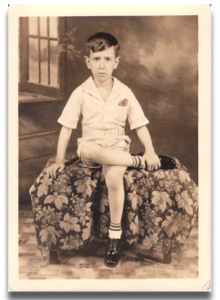eBooks are quickly becoming fashionable, and more importantly, accessible, thanks to the recent wave of eReader software programs and devices that have become available. While most consumers embracing the various eBook formats are likely to head to Amazon or Barnes & Noble to download the latest Stephen King or Nora Roberts tomes, I have found myself instead exploring the lesser known but still very notable public domain repositories such as Project Gutenburg, ManyBooks.net and epub Books. Their collected resources are quite extensive, and most notably--free.
If you are familiar with these various public domain archives but think they really only house the likes of Jane Austen and Charles Dickens, think again. I recently made a discovery at ManyBooks that was a true Boom Pop! revelation. There, available in eBook editions were all but one of the Tom Corbett Space Cadet series of books published by Grosset & Dunlap during the early 1950s. The books were adapted from the well known Tom Corbett radio and television programs and are shining examples of mid-20th century outer space pop culture. I had over the years managed to collect three of the eight books that were published, so to find four other titles immediately accessible was very exciting.
The Tom Corbett titles available at ManyBooks are:
- Stand By for Mars!
- Danger in Deep Space
- On the Trail of the Space Pirates
- The Space Pioneers
- The Revolt on Venus
- Treachery in Outer Space
- Sabotage in Space
ManyBooks also has an extensive selection of vintage mid-20th century science fiction novels and stories. You can find some very obscure titles and authors, but also discover material from significant names such as Andre Norton, E. E. Doc Smith, C. M. Kornbluth, Robert E. Howard, Harry Harrison and Lester del Rey, just to name a few.



















